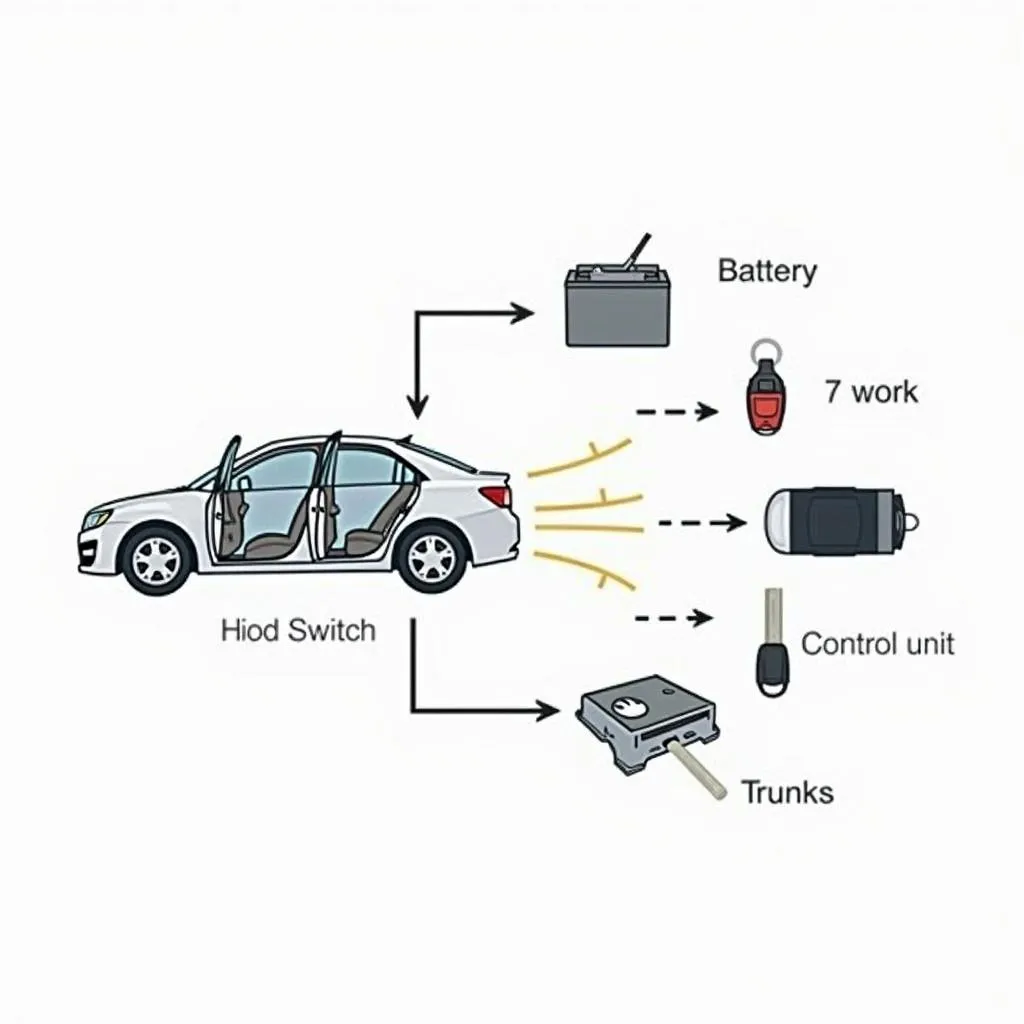Dealing with a malfunctioning car anti-theft system can be incredibly frustrating. Whether it’s a blaring alarm, a flashing light on your dashboard, or your car simply refusing to start, a triggered anti-theft system can bring your day to a grinding halt. This guide is designed to help you understand the common causes of car anti-theft system issues and provide you with practical steps to get your car back on the road.
Understanding Why Your Anti-Theft System Is Engaged
Modern vehicles are equipped with sophisticated electronic systems designed to protect them from theft. Here are a few reasons why your anti-theft system might be activated:
1. Weak or Dead Car Battery:
A weak or dead battery is one of the most common culprits behind anti-theft system malfunctions. The system relies on a consistent power supply to function correctly. If the battery voltage drops too low, the system may interpret it as a potential theft attempt.
2. Faulty Key Fob Battery or Signal:
Keyless entry systems use a battery-powered fob to communicate with your car’s anti-theft system. If the fob’s battery is weak or the signal is interrupted, the system may not recognize the key, triggering the immobilizer.
3. Malfunctioning Ignition Switch:
The ignition switch plays a crucial role in signaling the anti-theft system that you’re the authorized user. A worn-out or faulty ignition switch can send incorrect signals, leading the system to believe that someone is attempting to steal your car.
4. Damaged or Triggered Sensors:
Many cars have sensors in the doors, hood, and trunk. If one of these sensors malfunctions or gets triggered accidentally, it can set off the alarm.
 Car Anti-theft System Components Diagram
Car Anti-theft System Components Diagram
Recognizing the Signs of an Anti-Theft System Issue
Here are some common indicators that your car’s anti-theft system is the source of your problems:
- Car Alarm Won’t Stop: A constantly blaring alarm is a clear sign that something’s amiss.
- Flashing Security Light: Keep an eye on your dashboard. A flashing security light, often depicting a car with a key or lock symbol, can indicate an issue with the immobilizer system.
- Engine Cranks but Won’t Start: If you hear the engine cranking but it refuses to start, the immobilizer system might be preventing fuel delivery or ignition.
Essential Tools for Addressing Anti-Theft Issues
Before attempting to diagnose or fix the issue, gather the following tools:
- Your Car Manual: Your car manual is an invaluable resource for understanding the specifics of your vehicle’s anti-theft system.
- Jumper Cables: These come in handy if a dead battery is the culprit.
- Spare Key Fob: If you suspect a key fob issue, try using a spare key.
Troubleshooting Your Car’s Anti-Theft System
Now that you have a better understanding of the potential causes, let’s explore how to address them:
1. Check Your Car Battery
- Inspect for Corrosion: Examine the battery terminals for any signs of corrosion. If present, clean them with a baking soda and water solution.
- Jumpstart the Car: If the battery appears dead, try jumpstarting it using jumper cables and a working vehicle or a portable jump starter.
- Test the Battery: Once jumpstarted, have your battery tested by a mechanic or auto parts store to determine if it needs replacing.
2. Address Key Fob Problems
- Replace the Battery: Try replacing the battery in your key fob. Key fob batteries are inexpensive and readily available at most stores.
- Reprogram the Fob: If replacing the battery doesn’t work, you may need to reprogram the key fob to sync it with your car. Refer to your car manual or seek professional assistance for this procedure.
 Replacing Car Key Fob Battery
Replacing Car Key Fob Battery
3. Inspect the Ignition Switch
- Check for Loose Connections: Examine the ignition switch for any loose or damaged connections.
- Try Starting in Neutral: In some vehicles, starting the car in “Neutral” instead of “Park” can bypass a faulty ignition switch signal.
- Seek Professional Help: If you suspect a damaged ignition switch, it’s best to seek professional help from a qualified mechanic.
4. Address Sensor Issues
- Check Door, Hood, and Trunk Latches: Ensure all doors, the hood, and the trunk are closed securely.
- Inspect Sensors for Damage: Visually inspect the sensors located in the door jambs, hood latch, and trunk for any signs of damage or misalignment.
FAQs About Car Anti-Theft Systems
Here are some common questions and answers about car anti-theft systems:
Q: How do I know if my car has an immobilizer system?
A: Most modern cars manufactured after the mid-1990s come equipped with immobilizer systems. Check your car manual or look for a flashing security light on your dashboard that resembles a car with a key or lock.
Q: Can I disable my car’s anti-theft system myself?
A: It is not recommended to disable your car’s anti-theft system. These systems are designed to protect your vehicle from theft, and tampering with them can lead to further complications and potential damage.
Q: What should I do if I’ve tried all the troubleshooting steps and my anti-theft system is still engaged?
A: If you’re unable to resolve the issue yourself, it’s best to contact a qualified automotive locksmith or your car dealership for professional assistance. They have the expertise and specialized tools to diagnose and address complex anti-theft system problems.
If you need further assistance, especially in diagnosing complex car electronic issues, consider consulting with CARDIAGTECH. We offer a wide range of diagnostic tools and software solutions to help you get to the bottom of your car troubles.

